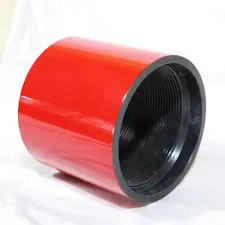- Afrikaans
- Albanian
- Amharic
- Arabic
- Armenian
- Azerbaijani
- Basque
- Belarusian
- Bengali
- Bosnian
- Bulgarian
- Catalan
- Cebuano
- Corsican
- Croatian
- Czech
- Danish
- Dutch
- English
- Esperanto
- Estonian
- Finnish
- French
- Frisian
- Galician
- Georgian
- German
- Greek
- Gujarati
- Haitian Creole
- hausa
- hawaiian
- Hebrew
- Hindi
- Miao
- Hungarian
- Icelandic
- igbo
- Indonesian
- irish
- Italian
- Japanese
- Javanese
- Kannada
- kazakh
- Khmer
- Rwandese
- Korean
- Kurdish
- Kyrgyz
- Lao
- Latin
- Latvian
- Lithuanian
- Luxembourgish
- Macedonian
- Malgashi
- Malay
- Malayalam
- Maltese
- Maori
- Marathi
- Mongolian
- Myanmar
- Nepali
- Norwegian
- Norwegian
- Occitan
- Pashto
- Persian
- Polish
- Portuguese
- Punjabi
- Romanian
- Russian
- Samoan
- Scottish Gaelic
- Serbian
- Sesotho
- Shona
- Sindhi
- Sinhala
- Slovak
- Slovenian
- Somali
- Spanish
- Sundanese
- Swahili
- Swedish
- Tagalog
- Tajik
- Tamil
- Tatar
- Telugu
- Thai
- Turkish
- Turkmen
- Ukrainian
- Urdu
- Uighur
- Uzbek
- Vietnamese
- Welsh
- Bantu
- Yiddish
- Yoruba
- Zulu
casing and tubing connections
Casing and Tubing Connections A Comprehensive Overview
In the oil and gas industry, the extraction of hydrocarbons from the earth involves several crucial stages, one of which is the assembly of casing and tubing connections. These connections play a pivotal role in the performance and safety of drilling operations, as they provide the necessary structural integrity to withstand the harsh environments encountered deep underground. This article delves into the significance, types, and considerations surrounding casing and tubing connections.
The Importance of Casing and Tubing
Casing is a series of steel pipes installed in a wellbore to support the walls of the hole and prevent it from collapsing. It also serves to isolate the different layers of rock and fluids found in the subsurface. Tubing, on the other hand, is the conduit through which oil and gas are transported from the reservoir to the surface. Together, casing and tubing ensure that drilling operations can be conducted safely and efficiently while preventing contamination of groundwater and the escape of hydrocarbons.
When selecting casing and tubing connections, operators must consider various factors, including the mechanical strength required to resist the pressures and temperatures encountered in certain formations, as well as the chemical compatibility of the materials with the fluids being produced. The importance of these considerations cannot be overstated, as failures in connections can lead to catastrophic consequences, including blowouts, spills, and other safety incidents.
Types of Casing and Tubing Connections
1. Threaded Connections This traditional method involves screwing together casing or tubing sections using tapered threads. While straightforward and effective, threaded connections require careful handling to prevent cross-threading and ensure proper torque during installation.
2. Welded Connections Welding provides a robust connection by fusing the ends of casing or tubing together. This method offers greater resistance to leakage and is often used in high-pressure applications. However, quality control is critical, as improper welding can lead to weaknesses that cause failures.
casing and tubing connections

3. Flanged Connections Flanges are used to connect piping sections with mechanical strength and ease of disassembly. These connections are commonly used in situations where frequent access to the wellbore is necessary, although they may not be suitable for high-pressure environments.
4. Mechanical Connections These involve the use of specialized tools to join sections of tubing and casing without the need for welding or threading. Mechanical connections can reduce installation time and enhance safety.
Challenges and Considerations
One of the primary challenges in casing and tubing connections is managing the effects of wear and corrosion over time. The harsh conditions of underground environments, coupled with the presence of various chemicals, can weaken connections and lead to leaks or failures. To mitigate these risks, operators often use protective coatings and select materials designed to withstand corrosive environments, such as stainless steel or specialized alloys.
Another important consideration is the proper maintenance of connections throughout the life of a well. Regular inspection and testing can help identify potential issues before they escalate, ensuring the integrity of the wellbore and preventing costly downtime.
Conclusion
Casing and tubing connections are fundamental to the safety and efficiency of oil and gas operations. Understanding the types of connections available and the challenges associated with them is essential for operators aiming to optimize their drilling processes and maintain the integrity of their wells. As technology continues to evolve, the development of more resilient materials and connection methods will likely enhance the reliability and safety of these critical components in the energy sector. By prioritizing these aspects, the industry can navigate the complexities of drilling operations while safeguarding both personnel and the environment.
-
Well Casing Extension Couplings – Applications and InstallationNewsJun.06,2025
-
Types of Crossover Subs in Drilling & CompletionNewsJun.06,2025
-
Key Features of High-Quality Tubing Pup JointsNewsJun.06,2025
-
Installation and Maintenance Tips for Steel Couplings for PipeNewsJun.06,2025
-
How to Select the Right Pup Joint for Oil & Gas OperationsNewsJun.06,2025
-
Applications of Stainless Steel Pipe CouplingsNewsJun.06,2025







